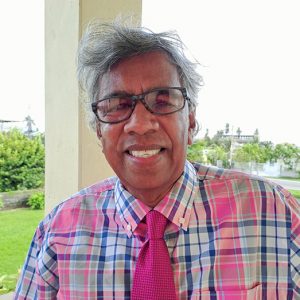THERE is no country in the world that does not have a crème de la crème (CDLC). It is a sociological formation in which moneyed people, people with high status (which takes in the arts, entertainment, academia, the professions) and the politically powerful form themselves into a social elite and are recognised in society as such.
The core of the CDLC is the moneyed folks because their wealth allows for easy penetration and acceptance of the society. In this column, I will not be employing the sociological definition of this stratum. Guyana’s CDLC was fashioned out of colonial society. The colonial administration, the Portuguese petit bourgeoisie (PPB) and the Mulatto/Creole class (MCC) were the quintessential CDLC of Guyanese society.
This elite formation has been diminished considerably since the rise of the Burnham Government and the exodus of the PPB. In the 1980s, Guyana hardly had a CDLC. With the rejection of socialist economics by President Desmond Hoyte, two types of class changes emerged. First, the PPB and the MCC were resuscitated through Messrs. Miles Fitzpatrick and David De Caires. Both men effectively used the Stabroek News to preserve the society’s CDLC.
The second type of class transformation was made possible by the 1990 Economic Recovery Programme of President Hoyte. A nouveau riche stratum was born that consisted mostly of young Indian businessmen who dabbled equally in underground economics as well as genuine small investments.
After 1990, these two class formations never had a direct or indirect relationship because the resuscitated CDLC used both social snobbery and skin colour to keep the nouveau riche at bay. But there is one social sphere in Guyana where the traditional CDLC and the nouveau riche meet; it is motor-racing. The traditional CDLC love motor-racing; the nouveau riche has acquired the taste for the sport.
The traditional CDLC has kept away from politics since the withering away of the Portuguese party, the United Force, in the early 1970s. For the rest of this column, I am going to be referring to the political CDLC, meaning the entry into official politics of the MCC from the forties onwards.
Space would not allow for too many notes on the political CDLC from 1950s, 1960s and early 1970s before President Burnham demobilized them from 1978 onwards. This column from here on will briefly concentrate on the political CDLC in the WPA and the AFC.
Leonard Craig wrote these words about Nigel Hughes in his Chronicle column of December 16, 2024 and I quote. “Nigel Hughes saw himself as the crème de la crème of the middle class with a birth right to any elite formation.” Craig’s portrayal of Hughes is nothing new for those who study Guyanese history using class analysis.
Hughes is the continuation of a long contemporary line that goes back to the era of Lionel Luckhoo and John Carter, both of whom were active in trying to claim state power for the MCC. After the Jagan/Burnham combination threatened the MCC political activism in the 1950, the MCC made a brilliant move.
It sent a coterie of MCC personalities to invade the PPP in the form of Martin Carter and Rory Westmaas and a few others whose role was to sound ultra-leftist so as to bring about colonial repression against the PPP. Carter achieved his purpose then went into service for the colonial office in British Guiana; first with the British consul office then Bookers. Released MI5 security documents revealed Carter to be a British plant.
After the dormancy of the MCC under the totalitarian drift of Burnham, the remnants of the MCC found an outlet with the advent of Walter Rodney. The political CDLC in the form of the Working People’s Alliance failed to dislodge the Burnham regime because the WPA was an atavistic return to the National Democratic Party of John Carter that felt its inherent aristocracy gave it the right to succeed the colonial state.
Convinced that the society would accept its natural right to inherit the power of the departing colonials, the WPA frowned on mass mobilisation over the years that it was founded.
In its call to the working class in 1979 to rise up against Burnham, the WPA attached little importance to the role of the PPP. According to Mr. Ralph Ramkarran, when the uprising was about to start and the PPP inquired about its shape, the WPA told the PPP that it cannot disclose details because they prefer it be a guessing game.
Just as the WPA resurrected the National Democratic Party, the Alliance For Change resurrected the spirit of the WPA. The AFC was the only success of the political CDLC but then it disintegrated after 2015 in its allegiance to its cultural superiority. Hughes is trying to resuscitate Guyana’s political CDLC. I doubt he will succeed.
DISCLAIMER: The views and opinions expressed in this column are solely those of the author and do not necessarily reflect the official policy or position of the Guyana National Newspapers Limited.



.jpg)









